Abstract
Neutralization of Clostridium difficile toxin by Clostridium sordellii antitoxin was studied by cytotoxicity assay in tissue culture. The sources of toxin were stools from two patients with pseudomembranous colitis and a culture filtrate of C. difficile isolated from one of the patients. C. sordellii antitoxin was available either in monovalent form or as gas gangrene polyvalent antitoxin. The potency of antitoxins against C. difficile determined by cytotoxicity assay did not correlate with the established values reported for mouse protection tests against C. sordellii toxin. An equivalent zone of optimal neutralization was demonstrated for stool toxin, and a slightly different one for culture toxin. The rate of neutralization appeared to be instantaneous, either at 24 or at 37 degrees C. The efficacy of antitoxin in preventing cytotoxicity in cultured cells preexposed to toxin decreased rapidly with preexposure time. The union between toxin and antitoxin could be readily dissociated by simple dilution or by ammonium sulfate precipitation followed by dissociated by simple dilution or by ammonium sulfate precipitation followed by dilution. Continued incubation of toxin-antitoxin mixture did not increase the firmness of the union; on the contrary, more dissociation occurred. The unusual looseness of the toxin-antitoxin union is probably relatd to lack of serological specificity or affinity. Based on these observations, a practical diagnostic method for antibiotic-induced colitis is outlined.
Full text
PDF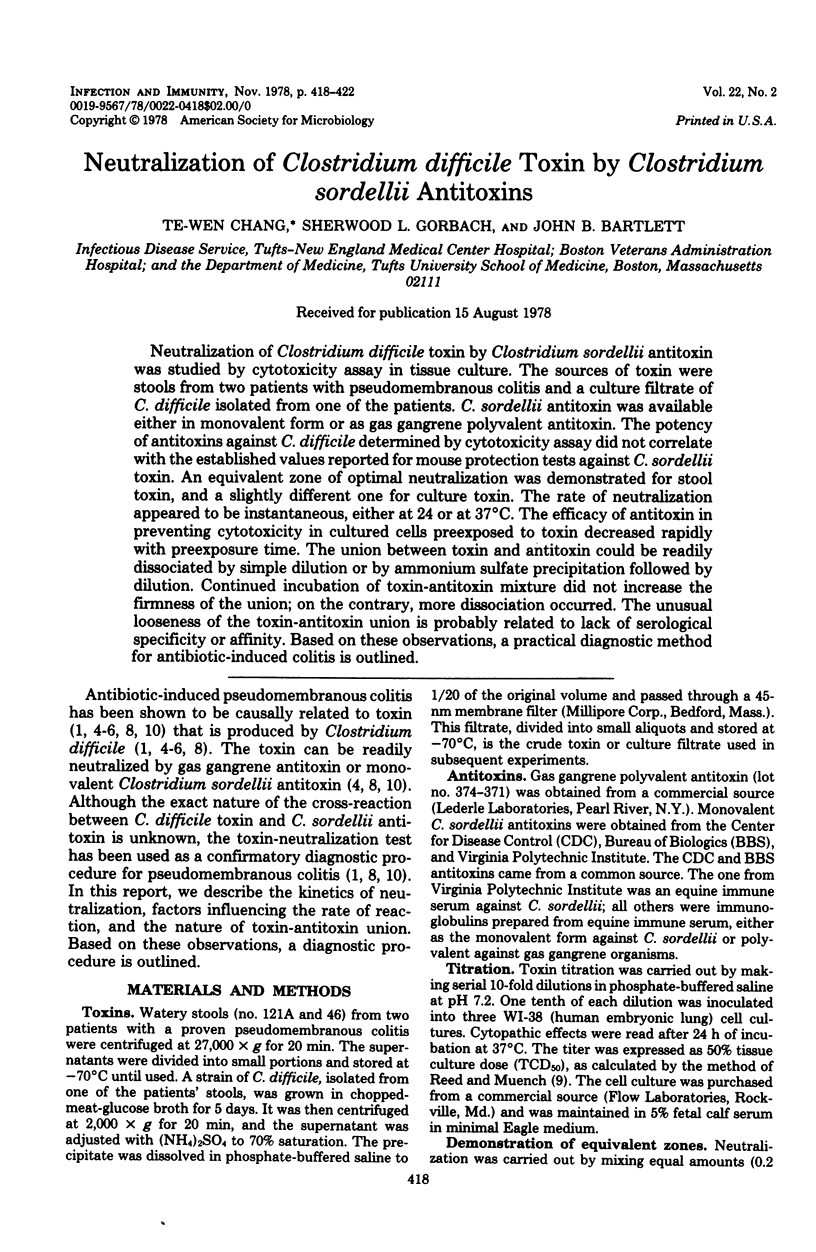
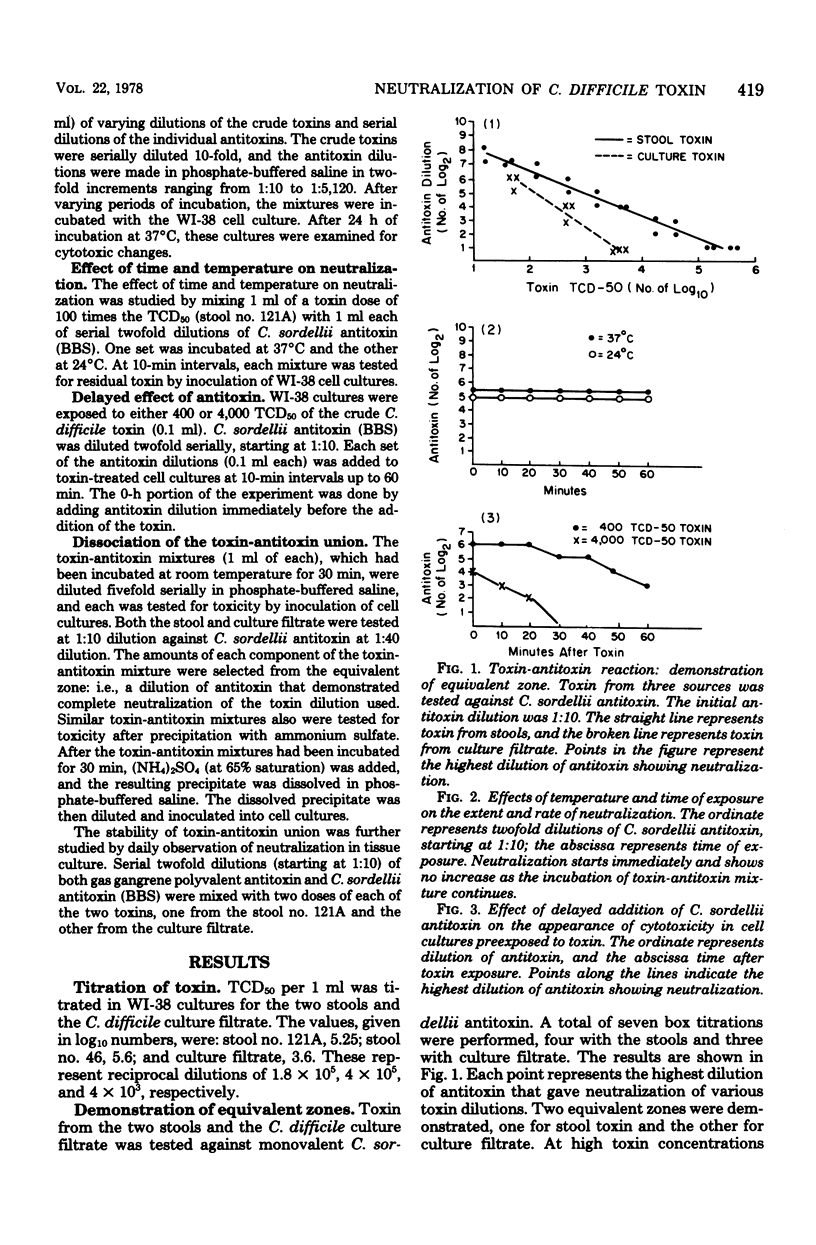
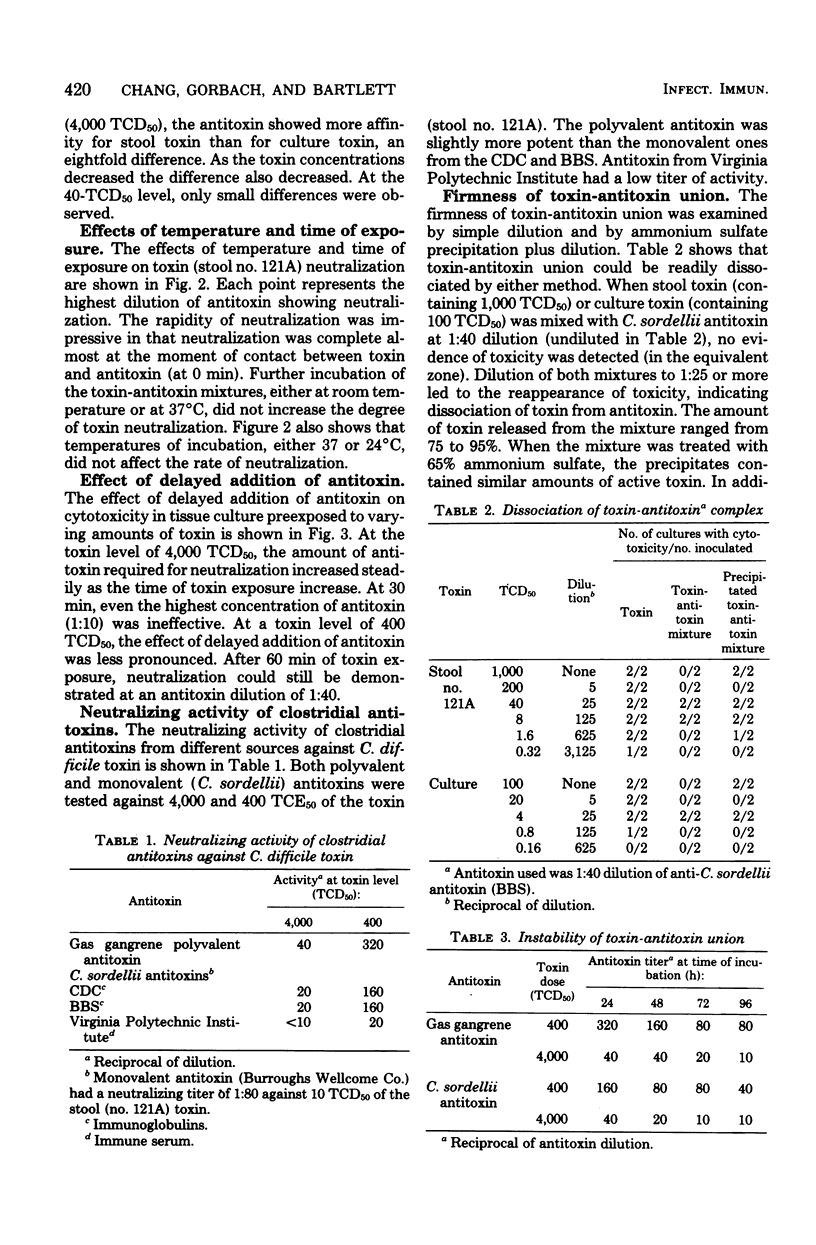
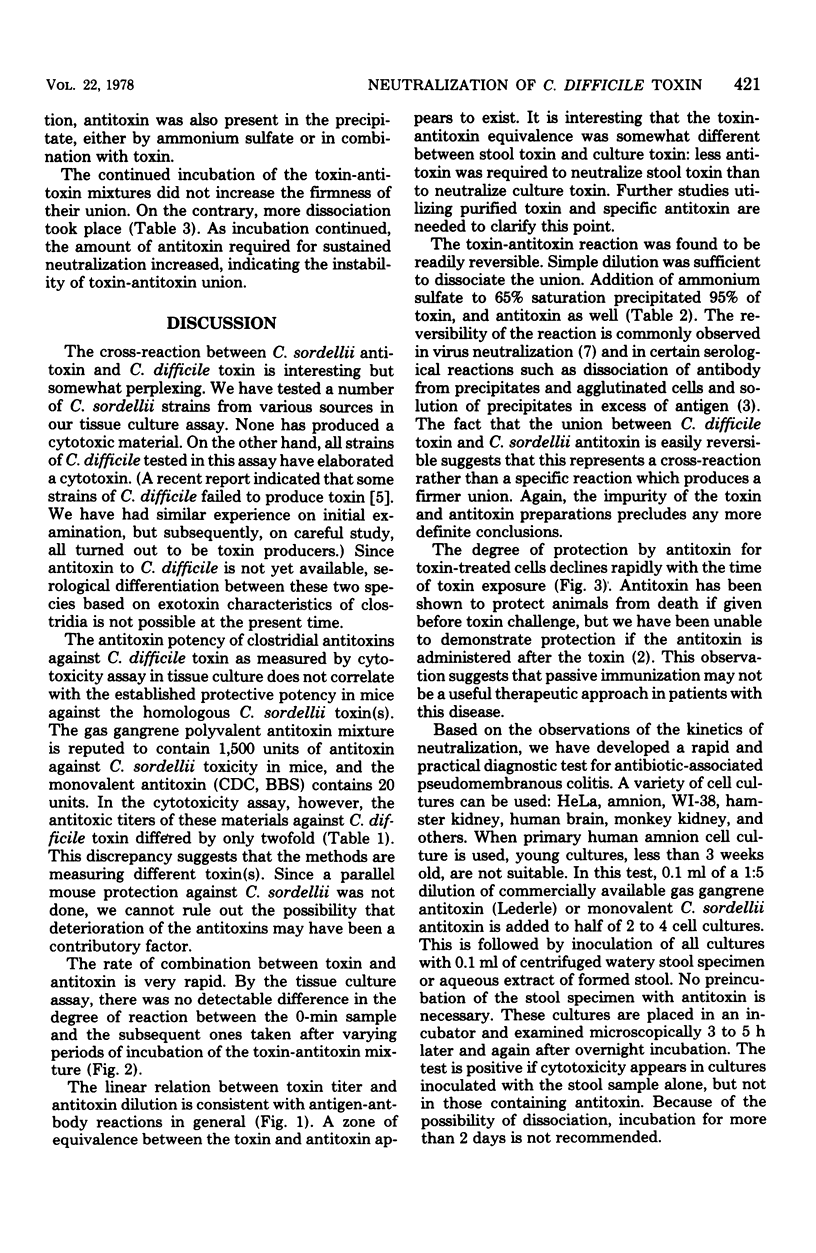
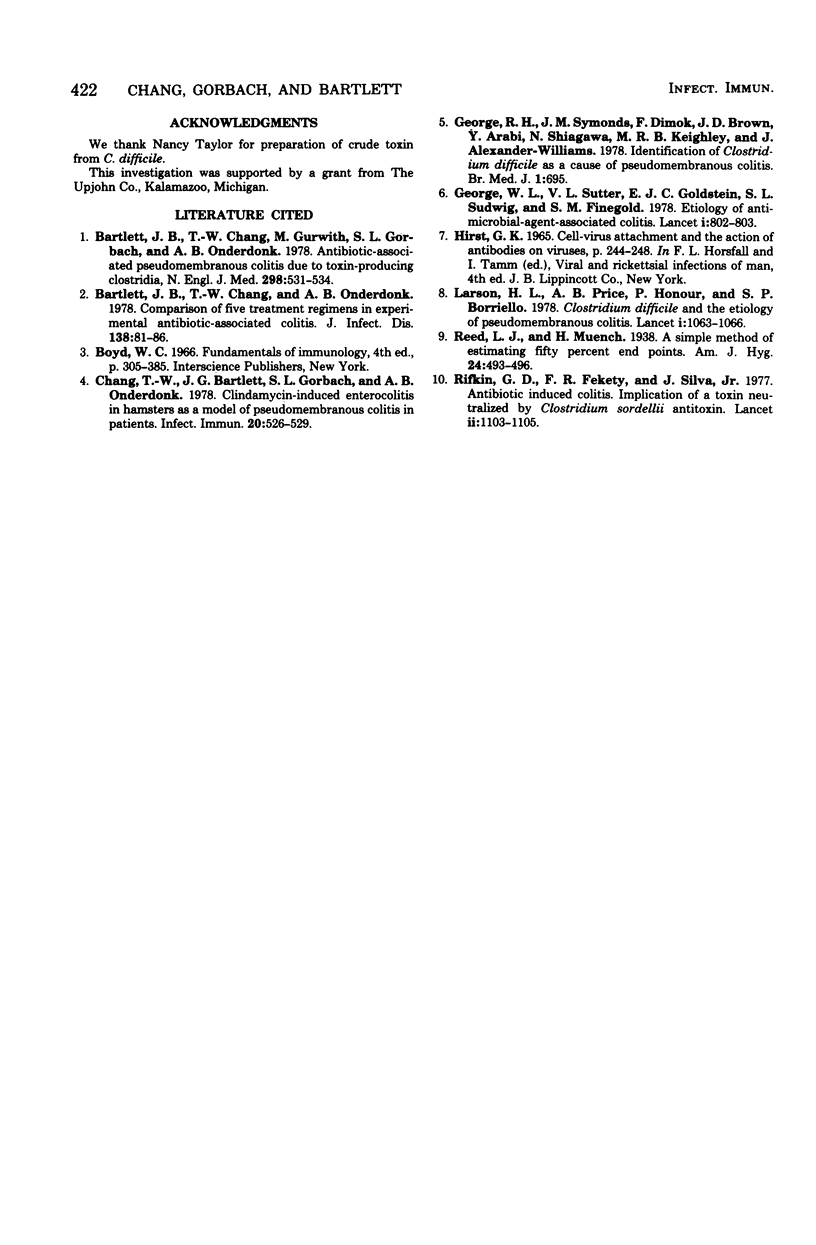
Selected References
These references are in PubMed. This may not be the complete list of references from this article.
- Bartlett J. G., Chang T. W., Gurwith M., Gorbach S. L., Onderdonk A. B. Antibiotic-associated pseudomembranous colitis due to toxin-producing clostridia. N Engl J Med. 1978 Mar 9;298(10):531–534. doi: 10.1056/NEJM197803092981003. [DOI] [PubMed] [Google Scholar]
- Bartlett J. G., Chang T. W., Onderdonk A. B. Comparison of five regimens for treatment of experimental clindamycin-associated colitis. J Infect Dis. 1978 Jul;138(1):81–86. doi: 10.1093/infdis/138.1.81. [DOI] [PubMed] [Google Scholar]
- Chang T. W., Bartlett J. G., Gorbach S. L., Onderdonk A. B. Clindamycin-induced enterocolitis in hamsters as a model of pseudomembranous colitis in patients. Infect Immun. 1978 May;20(2):526–529. doi: 10.1128/iai.20.2.526-529.1978. [DOI] [PMC free article] [PubMed] [Google Scholar]
- George R. H., Symonds J. M., Dimock F., Brown J. D., Arabi Y., Shinagawa N., Keighley M. R., Alexander-Williams J., Burdon D. W. Identification of Clostridium difficile as a cause of pseudomembranous colitis. Br Med J. 1978 Mar 18;1(6114):695–695. doi: 10.1136/bmj.1.6114.695. [DOI] [PMC free article] [PubMed] [Google Scholar]
- George W. L., Sutter V. L., Goldstein E. J., Ludwig S. L., Finegold S. M. Aetiology of antimicrobial-agent-associated colitis. Lancet. 1978 Apr 15;1(8068):802–803. doi: 10.1016/s0140-6736(78)93001-5. [DOI] [PubMed] [Google Scholar]
- Larson H. E., Price A. B., Honour P., Borriello S. P. Clostridium difficile and the aetiology of pseudomembranous colitis. Lancet. 1978 May 20;1(8073):1063–1066. doi: 10.1016/s0140-6736(78)90912-1. [DOI] [PubMed] [Google Scholar]
- Rifkin G. D., Fekety F. R., Silva J., Jr Antibiotic-induced colitis implication of a toxin neutralised by Clostridium sordellii antitoxin. Lancet. 1977 Nov 26;2(8048):1103–1106. doi: 10.1016/s0140-6736(77)90547-5. [DOI] [PubMed] [Google Scholar]


